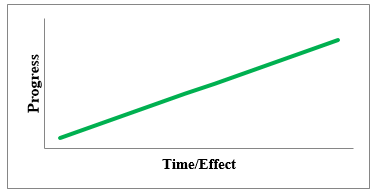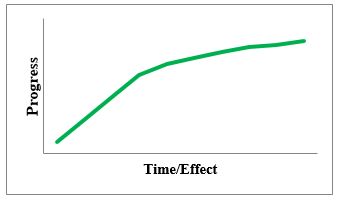The Plateau Effect in Learning English
By Muyyu Oeung, ACE Teacher
When we first start learning English, it is easy to see our improvement. After many years, however, we might feel like we are no longer improving. Have you experienced this feeling? You may in fact be experiencing the plateau effect. What is the plateau effect? According to Teaching Methodology (2016), the plateau effect occurs when students observe little or no noticeable improvement in their learning. This can be demotivating for students.
When learning a language, we tend to believe that our progress will always steadily continue, and that if we work hard, we will achieve mastery of the language. But language learning doesn’t work like that. Let’s look at the graphs below:
- High-growth phase
We make a lot of progress when we first start to learn a language. Our improvement is clear. Students in elementary and pre-intermediate levels generally experience this.


- Slow-growth phase
As we get better, it becomes harder and harder to keep improving. Intermediate students often easily see their improvement, but their learning speed is slower than when they first started learning a language.

- No-growth phase
When we feel as if we are no longer learning, we are in the no-growth phase. The majority of upper-intermediate and advanced students experience this.

Students who experience the plateau effect may lose motivation. Here are some ways to counteract the plateau effect:
- Know you might be experiencing the plateau effect, which is normal
- Set clear goals: the plateau effect may make you feel demotivated, and having clear goals can keep you going
- Learn more advanced vocabulary: to get over the plateau effect, learn more complex words and improve your range of vocabulary
- Listen, read, speak and write: whether or not you see improvement, you have to keep learning